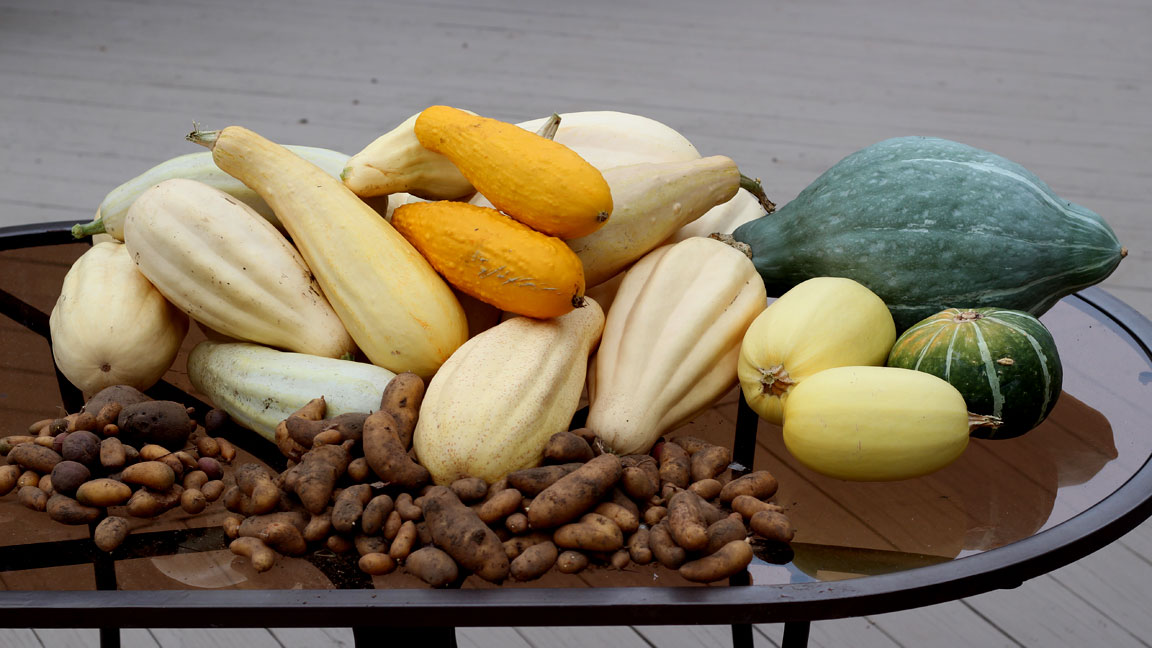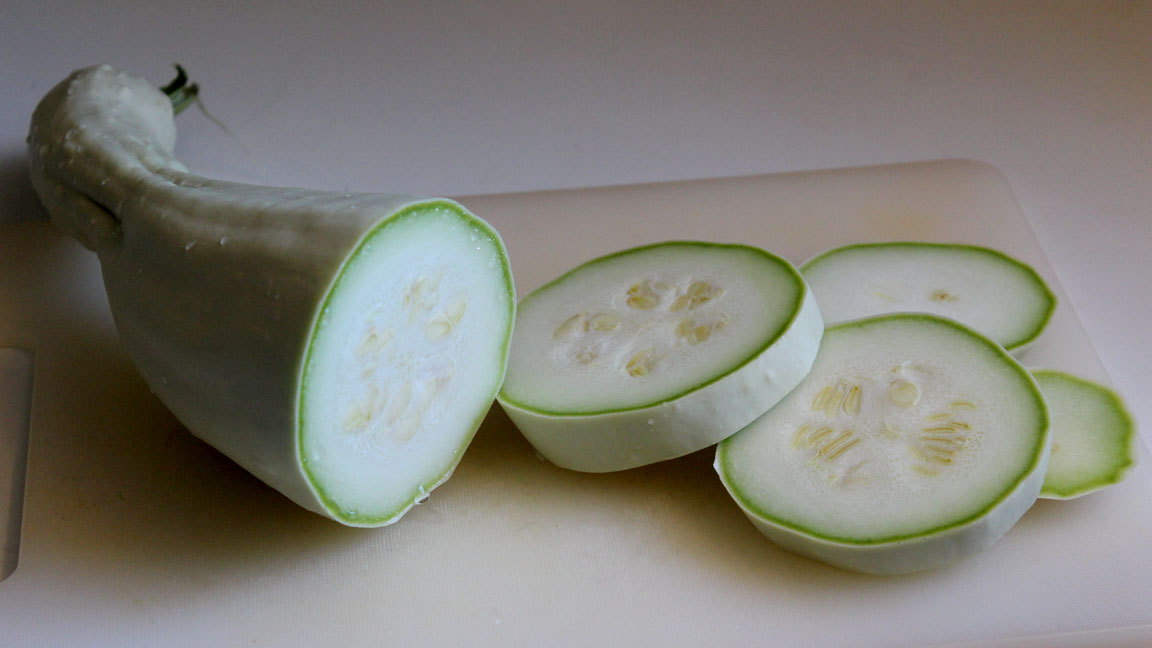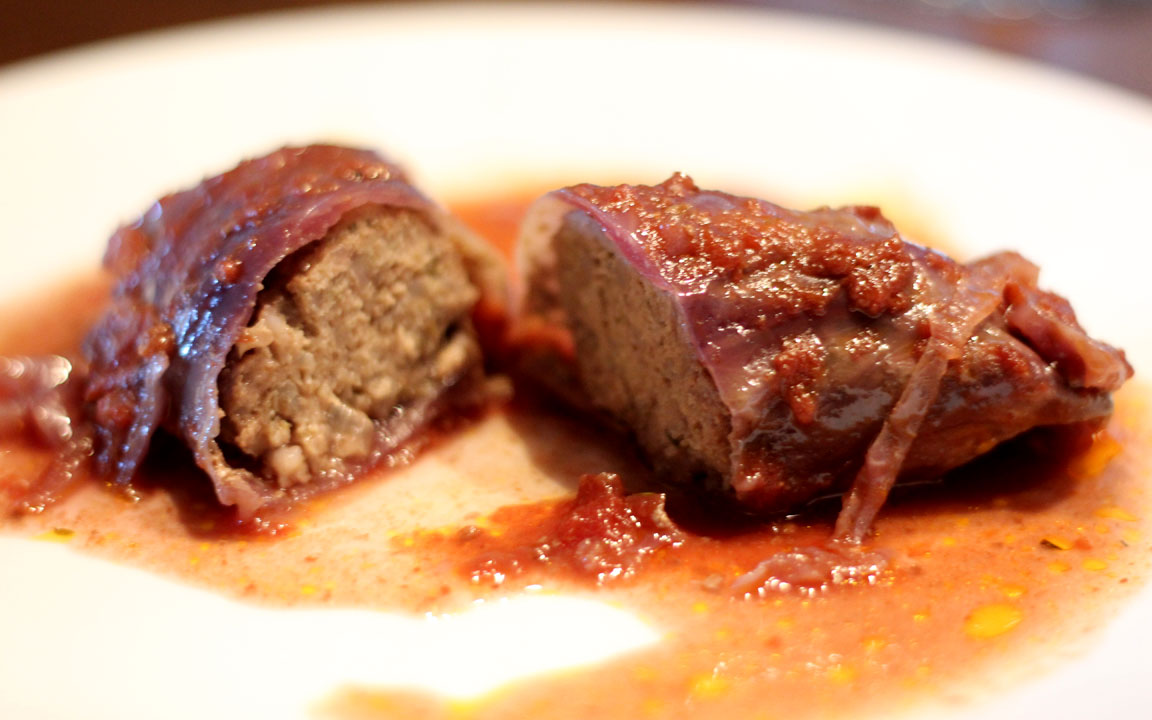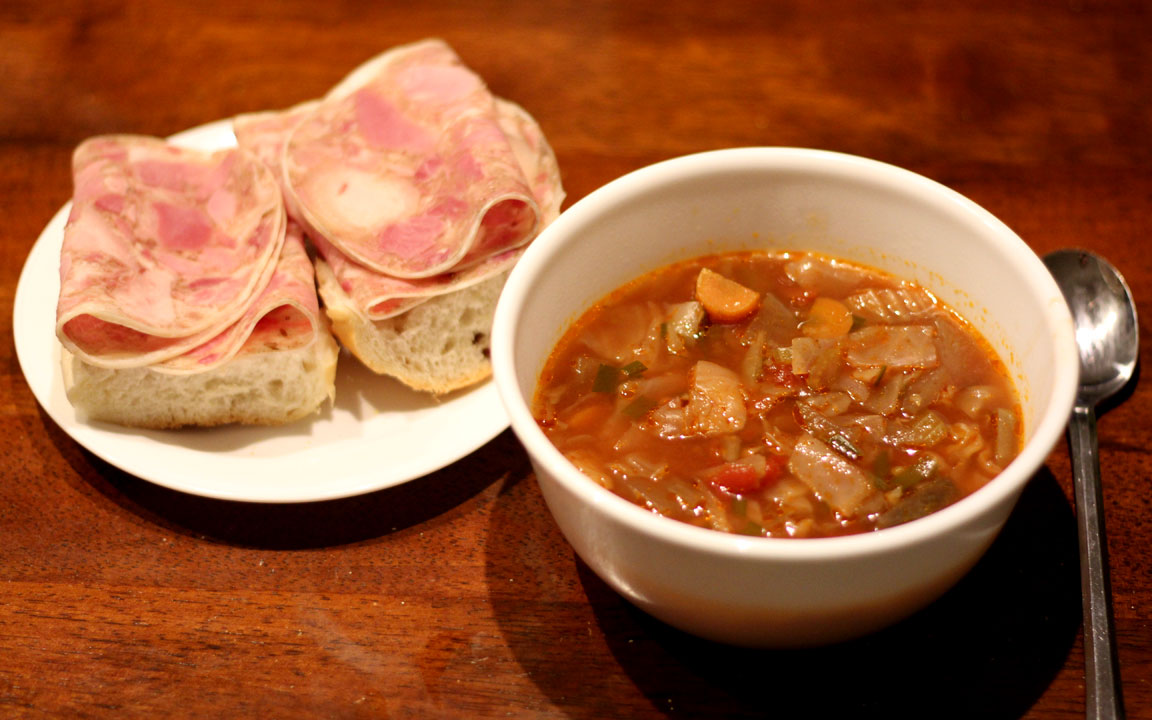Garden: September, Holy Frankensquash!
 A harvest in September
A harvest in September
A few years ago, I started saving seeds from our garden to save money. When I planted them, I got a surprise. My saved squash seeds produced something completely unrecognizable. I never took squash sex ed, but quickly learned that squash of a same species can cross pollinate to create a new cultivar. Each plant has male and female flowers that are pollinated in our garden by bees. I don’t control the bees, and they are promiscuous with all the plants in the garden. The fruit from the cross pollinated plant won’t have any change in the first year. However, seeds from that fruit will produce an entirely new type of squash.
Since I don’t control the pollination, I no longer save my own squash seeds. But each year some rogue plant will come up that I don’t have the heart to snuff out. I let the little bastard grow up to see what sort of creation they might become. This year, there were a couple of squash plants that escaped my hoe. They must have taken on some hulk genes, because they went ape shit. Over the two weeks we were in Nova Scotia, they inundated half of the garden. The good news is these Frankensquash have been good producers.
In my case, the interbreeding was within the species Cucurbita pepo which includes spaghetti, crookneck, scallop, and zucchini squash, as well as certain pumpkins. From what I can tell, one Frankensquash is a cross between a scallop and a spaghetti squash, and the other is a cross between a yellow crookneck and a spaghetti squash. Early on, they had traits of summer squash, but the plants later vined out and the fruits started getting harder like winter squash. Because of how much they produced, we should be eating squash well into the winter. Aside from the squash, we also pulled several purple cabbages, corn, tomatoes, and potatoes from the garden.
 A young Frankensquash
A young Frankensquash
The days are getting shorter, temperatures are dropping, and once again it feels good to be in the sun. The season has changed and so has our daily routine.
In the summertime, we made a lot of salads and grilled outside to keep the house cool. Now, it’s nice to get back inside where the stove and oven cook our food as well as warm our home. Since we pulled several heads of cabbage, we’ve been cooking up some Eastern European classics. One of my favorites is stuffed cabbage or golabki. With these dishes, it’s not just the heat but also the aroma that warms the house.
 Golabki – Stuffed Cabbage
Golabki – Stuffed Cabbage
We also make lots of soups this time of year. All of our soups are done from scratch. No soup stock from a can or carton – just scrap meats, vegetables, herbs, salt, and pepper. It’s cheap, easy, and delicious. When we get our whole chickens, we keep the backbone and the guts to make chicken soup. For beef soups, we get cheap neck bones from our farmers’ market. Another Eastern European classic, borscht, is an excellent soup to make with beef neck bones, cabbage and other fall crops.
 Borscht, enjoyed with some head cheese on fresh baguette
Borscht, enjoyed with some head cheese on fresh baguette
I usually prefer the warmer weather, but like a couple of hobbits, we have our supplies in order. Our fridge is full of kale and cabbages, and our garage is packed full of firewood, squash, potatoes and garlic. Hundreds of pounds of food and tons of fuel that did not have to get shipped or trucked across the globe after being processed in factories. It’s even more satisfying knowing that all of these are simply products of my sweat and determination, and not just cash.
I had the entire summer to enjoy working outside in the garden, but now I’m ready to switch gears with the weather. A couple of weeks ago, I brewed my first IPA of the season, and recently kegged and carbonated it. Last night, it was cold enough to fire up the wood stove for the first time. It was a great start to the season – enjoying a fresh IPA while playing pyro and staying toasty warm.